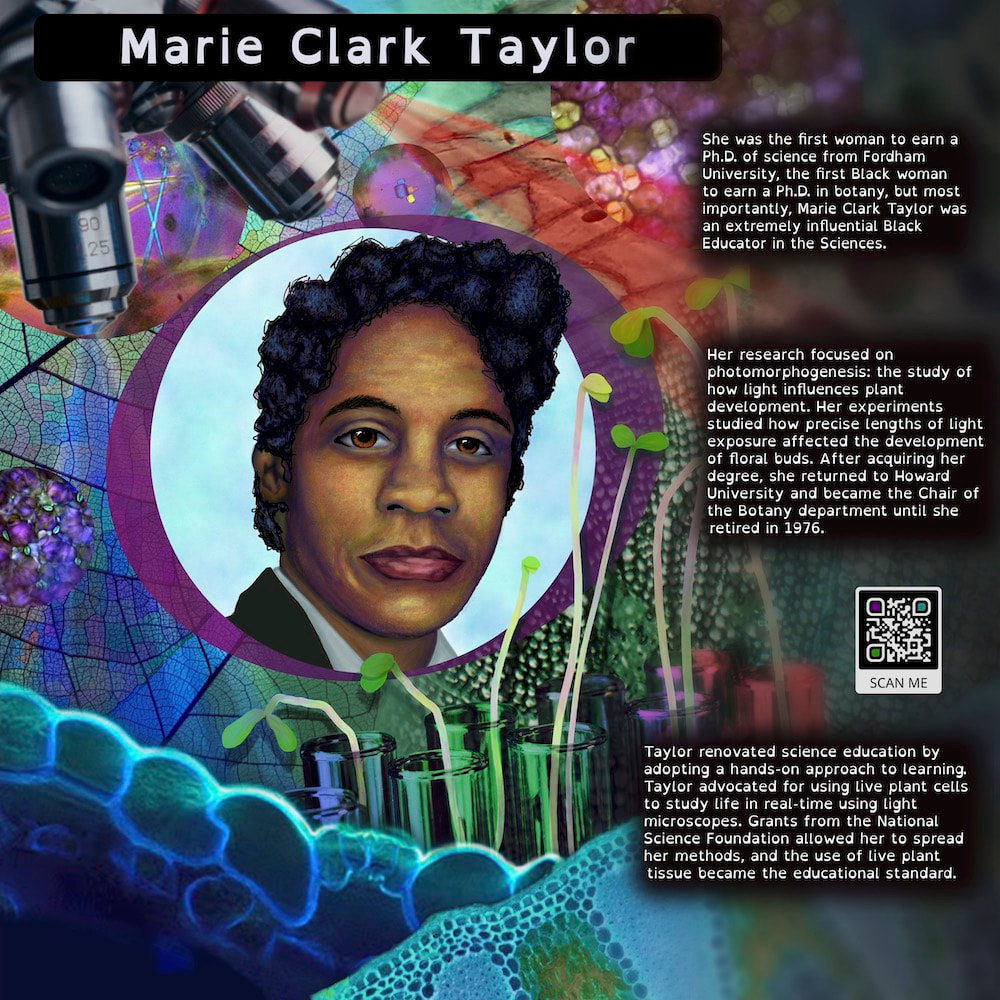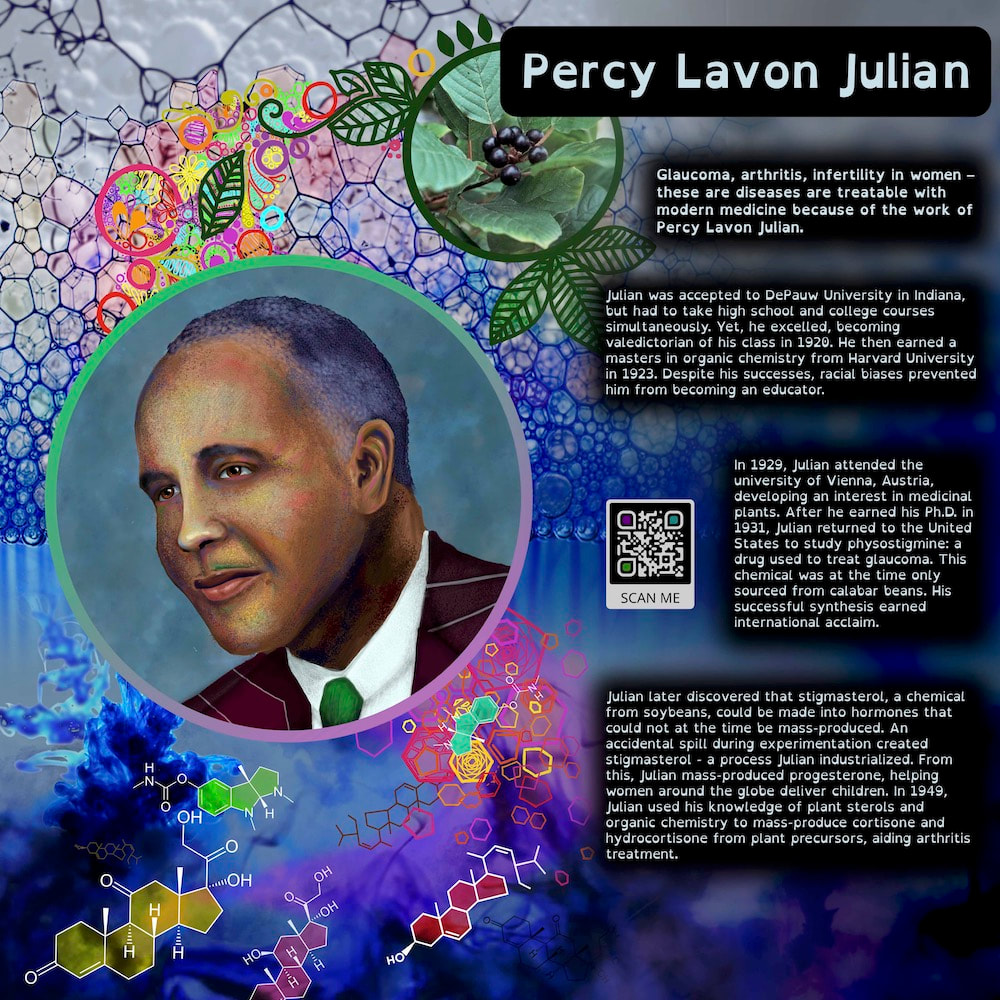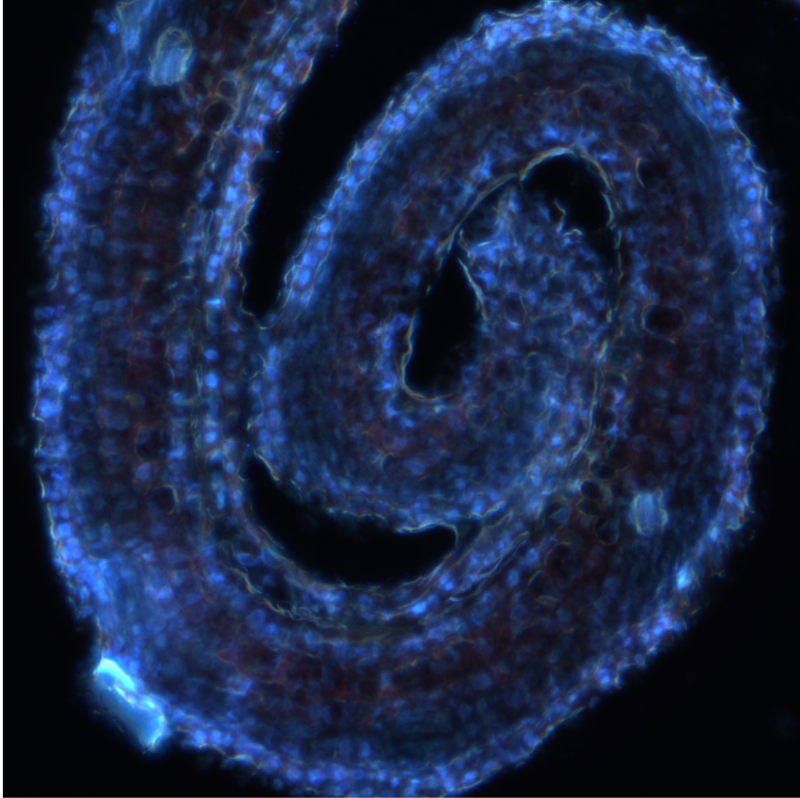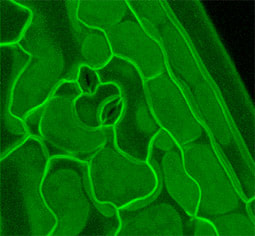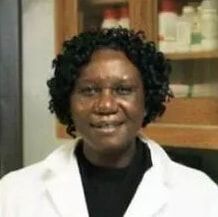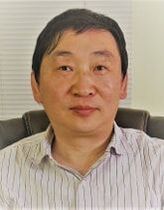PCA Art and Science Exhibit
A goal of the Plant Cell Atlas initiative is to increase Black, Indigenous, and People of Color (BIPOC) undergraduate student interest in plant sciences and to foster a more diverse and inclusive scientific community. To do this, we are hosting portable art and science exhibits at Historically Black Colleges and Universities (HBCUs), Hispanic Serving Institutes, and Primarily Undergraduate Institutions (PUIs) to raise awareness of the impact that plant research can have on society, the environment, and the economy. These exhibits take the forms of 4 banners centered around a plant science topic per exhibit, which lasts for one semester or 2 quarters. The inaugural exhibit, showing in Fall 2021, features historically significant Black figures in plant science with short biographies of each scientist and art that highlights their research. The second exhibit in Spring 2022, will focus on impressive feats of plant biotechnology such as phytoremediation and vaccine production in plants. You can learn more about the venues that will be featuring these exhibits and the content of the first exhibit below. See our paper in Trends in Plant Science for more details on the Fall 2021 exhibit and how to incorporate the exhibit into undergraduate science curricula.
Exhibit Venues
If you are interested in hosting our exhibits at your institution or if you are interested in collaborating on creating new exhibits, please contact us for details.
Exhibit Venues
If you are interested in hosting our exhibits at your institution or if you are interested in collaborating on creating new exhibits, please contact us for details.
Spring 2022 Exhibit - Plant Biotechnology
|
Phytoremediation is the process of using plants, along with microorganisms and fungi, to repair damaged ecosystems. This is often done using plants that can sequester pollutants into their cell walls and/or turn the toxins into harmless chemicals.
This is a promising biotechnology for fighting climate change for several reasons:
|
|
Did you know that plants can be used to manufacture vaccines?
With modern gene-editing technology, plants can be made to take up specific DNA sequences, called transgenes. As the plants grow, that DNA becomes protein, accumulating inside the cells. The plants are then harvested, and the transgenic protein is extracted. This process is called molecular farming, and with it, all sorts of organic compounds can be cheaply grown and harvested. Transient gene expression, a process where fully-grown plants are given short-lived DNA, can expedite this process. Together these technologies can produce large quantities of antigens, the proteins essential for vaccines, in only a few weeks. Plant-made vaccines are even shown to be more effective at providing immunity than traditionally made vaccines, due to the different sugars plants use. As this technology progresses, it has the potential to revolutionize vaccine production and personalized medicine with its cheap and efficient production of molecules. |
|
African Ethnobotanical knowledge has become culturally important across the globe through the African diaspora. Most of the medicinal plants producing unknown bioactive compounds have not been studied, and have great potential for the development of new treatments for disease. These plants may also help regulate the climate. Unfortunately, many of these species are now under ecological threat, and could go extinct. Ethnobotanical knowledge of these important plants could go extinct with them, as younger generations are learning westernized medicine instead. Incorporating ethnobotany into the global body of knowledge is critical for both the future of medicine and the preservation of culture.
This exhibit features Wangari Maathi, a pioneer in African ecological conservation and human rights. She was the first African woman to receive a Nobel Peace Prize, and founded the African Green Belt Movement. Her efforts have been recognized as vital in preserving the biodiversity of plants used in African ethnobotanical medicine. |
|
The structure of a plant is crucial for its ability to survive in its environment. For example, deep roots allow plants to access water far beneath the soil’s surface in arid climates. Plants modulate their growth to acclimate to their surroundings; for example, plants grow leaves towards the sun to get enough light. This is stimulated by auxin, the growth hormone in plants. Plant tissues make auxin, and transfer it to where the cells are growing using transport proteins. The meristems of a plant - the tips of the roots and shoots - are where much of this growth occurs. Hormones in the meristems control where auxin is concentrated. The interactions between these hormones create the Fibonacci spiral pattern seen in many plants. Scientists theorize that this pattern helps optimize the spacing of organs for structural balance and receiving light.
Altering the structure of a plant can improve its potential to survive in an unfamiliar environment. With modern bioengineering technology, like CRISPR, plants can be made hardier through the controlled expression of auxin transport proteins. |
Fall 2021 Exhibit - Black Plant Scientists
|
Marie Clark Taylor was the first Black woman to get a Ph.D. in botany and the first woman of any race to receive a Ph.D. of science from Fordham University. Her research focused on photomorphogenesis: the study of how light influences plant development. Her experiments investigated how photoperiods, or precise lengths of light exposure, affected the development of floral buds.
Taylor was also one of the world’s most prominent Black educators in Science, advocating for the use of live plant cells to study life in real-time using light microscopes. Her methods were so successful that President Lyndon B. Johnson requested that she expand her teaching methods internationally and grants from the National Science Foundation allowed her to disseminate her methods in the US. Taylor's efforts made the use of live plant tissue to teach biology the educational standard in the United States. |
|
George Washington Carver was a world renowned plant scientist. His research focused on sustainable farming practices, such as the independent invention of crop rotation using peanuts, soybeans, and sweet potatoes, similar to the three sisters of First Nation agricultural practices. These practices restored the soil’s nitrogen content while providing a nutritious diet for Southern farmers.
Carver’s most famous success was with peanuts. He invented a use for every part of the plant and lobbied the House of Representatives for a tariff on peanuts to make peanuts the cash crop of the South. His work won many accolades including election to Britain's Society for the Encouragement of Arts, Manufactures, and Commerce and the Spingarn Medal. Posthumously Carver was inducted into the National Inventors Hall of Fame and was given a national monument - the first dedicated to a Black American. |
|
Edmond was born a slave in St. Suzanne, Réunion - a French island near Madagascar. Sent to assist the botanist Fereol Bellier-Beaumont as a child, Edmond was taught how to care for Beaumont’s many plants, including hand pollination. While vanilla was cultivated globally, at the time it would not grow beans – the desired fruit of the plant. Curious, Edmond closely examined the flowers and found the stigma, the plant’s pollen receiving organ, and noticed a leafy lid covering it. Using blades of grass Edmond opened this lid and deposited pollen onto the stigma. Weeks later, as vanilla beans hung from the vines, Edmond’s discovery became the start of the vanilla industry.
“It is entirely due to him,” quoted Fereol, that Réunion became a prosperous country. Edmond was then freed and given the last name Albius, but he never received any profits from his discovery. After a brief stint abroad he married and moved back to Réunion, where he lived until his death. A century later, a statue of Albius was built in Réunion that honors his contribution to science, and the sweet taste of vanilla. |
|
Percy Lavon Julian was a chemist who researched the synthesis of medicines from plants. He received his Ph.D. from the University of Vienna, Austria. After returning to the United States he began working on the synthesis of physostigmine at DePauw University before moving onto industry at the Glidden Company. Julian developed the first synthesis method for physostigmine, a compound used in the treatment of glaucoma, sourced from the African Calabar bean. He also developed methods to synthesize several hormones used in therapeutic treatments on a mass scale including progesterone, cortisone, and hydrocortisone.
Percy Lavon Julian also started and later sold his own company, Julian Laboratories, making him one of the first Black millionaires in American history. He was the first Black chemist to be accepted to the National Academy of Sciences and was elected into the National Inventors Hall of Fame. After he sold his company, he founded the Julian Research Institute, a non-profit organization, which he ran until his death. |
About
Established in 1865 Bowie State University is the oldest HBCU in Maryland and is one of the 10 oldest HBCU's in the country. It was also the first HBCU to offer international study programs. Bowie State has 23 undergraduate majors, 20 master's degree programs, 16 specialty degree certificates, and 2 doctoral programs. Bowie State is also home to the Center for Natural Sciences, Mathematics, and Nursing which houses research and instructional laboratories and a fully enclosed greenhouse.
Plant Biology Classes
Established in 1865 Bowie State University is the oldest HBCU in Maryland and is one of the 10 oldest HBCU's in the country. It was also the first HBCU to offer international study programs. Bowie State has 23 undergraduate majors, 20 master's degree programs, 16 specialty degree certificates, and 2 doctoral programs. Bowie State is also home to the Center for Natural Sciences, Mathematics, and Nursing which houses research and instructional laboratories and a fully enclosed greenhouse.
Plant Biology Classes
- General Botany, Biology 105:001/002
- Plant Metabolomics, Biology 416:001
About
Established in 1867 Howard University is a private university and offers the most degree programs of any HBCU in the nation. Howard has a highly ranked STEM program and is ranked by the National Science Foundation as the lead producer of African American undergraduates that go on to earn STEM doctoral degrees. Marie Clark Taylor, one of the featured scientists in this exhibit, was a professor and chair at Howard University. The lecture auditorium in the Ernest E. Just Hall Biology building is named after her and she was instrumental in the design and building of the green house on the roof of the building.
Intro Biology Classes Undergraduate Biology Program
Graduate Biology Program
Established in 1867 Howard University is a private university and offers the most degree programs of any HBCU in the nation. Howard has a highly ranked STEM program and is ranked by the National Science Foundation as the lead producer of African American undergraduates that go on to earn STEM doctoral degrees. Marie Clark Taylor, one of the featured scientists in this exhibit, was a professor and chair at Howard University. The lecture auditorium in the Ernest E. Just Hall Biology building is named after her and she was instrumental in the design and building of the green house on the roof of the building.
Intro Biology Classes Undergraduate Biology Program
Graduate Biology Program
About
Established in 1867 Morgan State University is now the largest HBCU in Maryland. Morgan has over 117 academic programs spanning from baccalaureate to doctoral degrees and was named Maryland's Preeminent Public Urban Research University in 2017. Morgan is also classified as a high research (R2) institution. It is also the only university to have its entire campus named a National Treasure by the National Trust for Historic Preservation.
Intro Biology Classes
Established in 1867 Morgan State University is now the largest HBCU in Maryland. Morgan has over 117 academic programs spanning from baccalaureate to doctoral degrees and was named Maryland's Preeminent Public Urban Research University in 2017. Morgan is also classified as a high research (R2) institution. It is also the only university to have its entire campus named a National Treasure by the National Trust for Historic Preservation.
Intro Biology Classes
- Introductory Biology I, BIOL 105
- Introductory Biology II, BIOL 106
- Biochemistry, CHEM 304
Organizing Committee
|
Maxwell Eckelbarger is a sophomore at Stanford University studying a self-designed major called Botanical Engineering. He is from Spencerville, Indiana and grew up on a farm and in the forests, and this instilled in him a love for nature and plants. He wants to study how plants and other biological vectors can be used to fix environmental issues and repair Earth's ecosystems and make modern life more sustainable. He is most interested in cold sensation and toxin processing in plants' secondary metabolism as of recent. He is also an art minor and pursuing a notation in science communication, and is passionate about communicating science to the public through images.
|
|
|
Anne Osano is an Associate Professor of Biology at Bowie State University in Maryland with a Ph.D. degree in Plant Science (Botany) from University of Nairobi, Kenya. Dr. Osano's research interest is in Plant metabolomics. She heads the Plant metabolomics and Hydroponics laboratory at the Natural Sciences Department which was funded by National Science Foundation (NSF) grant whose goal was to enhance the Plant Biology Program at Natural Sciences Department. Her research focus uses Metabolomics and Elicitation approaches for the enhancement of metabolite richness of fruits and vegetables to address Food Security and the production of super crops. Metabolomics approaches are further used to study Tropical Indigenous Food crops as well the tropical medicinal plants used in Traditional Africa Medicinal system.
|
|
|
Jiangnan Peng is an Assistant Professor of Chemistry at Morgan State University. Dr. Peng's research interests focus on the identification and analysis of bioactive components from natural resources, including plants, fungi, microbes, and marine invertebrates. His research program explores natural products in three major fields: (1) Discovery of new drug leads from natural resources for the treatment of human diseases such as cancer and infectious diseases, using bioassay-guided isolation, structure elucidation, and chemical optimization; (2) Investigation of the scientific basis of dietary supplements and herb medicines, through studying the bioactive components and pharmacology, and establishing comprehensive analytical methods for better control the quality of them; (3) Development of new botanical drugs.
|
|
|
Seung Yon (Sue) Rhee is a Senior Staff Member of the Plant Biology Department at Carnegie Institution for Science. Her group strives to uncover the molecular mechanisms underlying adaptive traits in the face of heat, drought, nutrient limitation, and pests. Dr. Rhee’s group studies a variety of plants including models, orphan crops, medicinal and desert plants. More recently their work has involved studying a model nematode C. elegans, fungal pathogens, and piezophilic bacteria. Her group employs computational modeling and targeted laboratory testing to study mechanisms of adaptation, functions of novel genes, organization and function of metabolic networks, and chemical and neuronal code of plant-animal interactions. Her group is also interested in developing translational research programs involving biomass maximization under drought in bioenergy crops. Dr. Rhee received her B.A. in biology from Swarthmore College and a Ph.D. in biology from Stanford University. She has been an investigator at the Plant Biology Department of Carnegie Institution for Science since 1999.
|
|
|
Selena Rice is the Scientific Coordinator for the Plant Cell Atlas and a Biocurator of the Plant Metabolic Network in the Plant Biology Department at Carnegie Institution for Science. She received her Ph.D. in Biology from Johns Hopkins University studying the structure, function, and chemistry of truncated hemoglobins and her B.Sc. in Biology from Northeastern University. She is interested in plant metabolism, biochemistry, and biophysics.
|
|
|
Hemayet Ullah is an Associate Professor of Biology at the Howard University, Washington, DC. His lab's main interest is elucidating the scaffold protein mediated cellular signal transduction pathways. His recent works spanned from model plant Arabidopsis response to environmental stress signaling pathways to developing small inhibitor molecules of scaffold protein to use as a broad anti-viral and in the cancer cell metastasis processes. The scaffold protein is implicated in diverse signaling pathways in plants and in human diseases including cancer. The research has resulted in 6 different patent applications spanning applications of these inhibitor 'drugs' for drought/salt stress resistance in crops, for use as a broad anti-viral drug, and for use in the inhibition of cancer cell metastasis.
|





